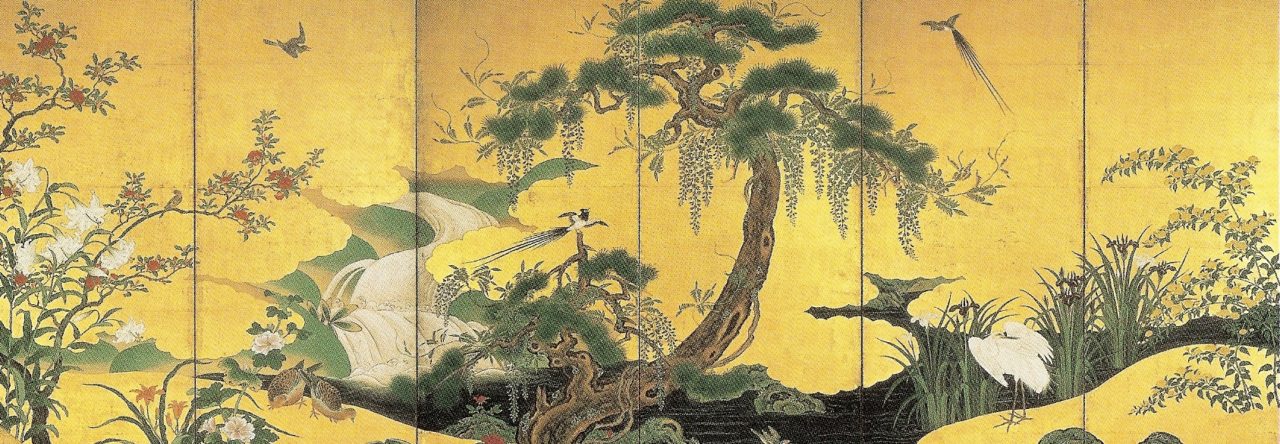
Frithjof Schuon was not only a metaphysician in the tradition of Shankara, Plato, Plotinus and Meister Eckhart, he was also a painter. His paintings, sketches and drawings illustrate with depth and talent the aesthetic principles expressed in his books (“The Beautiful is the Splendor of the True” as he liked to remind it) and in his poetry. He wrote several chapters about art in various books.
What is striking, in all these texts, is to see how much Schuon manifests a deep sense of forms, visual forms and colors for that matter. For him, the forms which surround us condition strongly, and insidiously when they are ugly, our soul. The modern world, the world of industrial societies, as opposed to traditional worlds, those which are mostly determined by one of the great religions, displays almost everywhere the cult of the ugly and of the offensive. Reacting against this quite “diabolical” tendency, Schuon redefines, with an amazing clarity, what the Beautiful is objectively (a definition which has nothing to do with the notions of neoclassical aesthetic canon) and leads us, throughout his books, to all the “beauties” that mankind produced throughout history, in order to extract their quintessence.
As for his paintings, they express the most intimate and inward aspects of his doctrine (ends, the visible and the Intelligible, meet). See, below and throughout this site, some examples of these paintings. For a hard copy of most of Frithjof Schuon’s paintings, see the two books published by World Wisdom Books:
- The Feathered Sun, Plains Indians in art and Philosophy, by Frithjof Schuon, with an introduction by Thomas Yellowtail, World Wisdom Books, USA, 2003.
- Images of Primordial and Mystic Beauty, paintings by Frithjof Schuon and one of his students, with an introduction by one of his associates; World Wisdom Books, Bloomington, Indiana, USA, 2003.
Traditional art derives from a creativity which combines heavenly inspiration with ethnic genius, and which does so in the manner of a science endowed with rules and not by way of individual improvisation; ars sine scientia nihil.
The work of the artist or craftsman comprises two perfections, namely perfection of surface and perfection of depth. At surface level, the work must be well done, in conformity with the laws of the art and the demands of the style; in depth, it must be able to communicate the reality which it expresses. This explains why traditional art is related to esoterism as regards its form and to spiritual realization as regards its practice; for the form expresses the essence, and an understanding of the form awakens the need to transcend it with a view to its essence or archetype.
The artist, in fashioning the work — the form — fashions himself; and as the purpose of the form is to communicate the essence or celestial content, the artist sees this a priori in the formal container; realizing the form from the starting-point of the essence, he becomes the essence by realizing the form.
Schuon, Esoterism as a Principle and as a Way,
2019, “The Degrees of Art”.

The existence of princely and priestly garments proves that clothing confers a personality upon man, that it expresses or manifests a function which may transcend or ennoble the individual.
To Have a Center, 1990, p. 159.

One of the most powerful symbols of the sun is the majestic headdress made of eagle feathers; he who wears it is identified with the solar orb, and it is easy to understand that not everyone is qualified to wear it; its splendor — unique of its kind among all traditional headdresses in the world — suggests both royal and priestly dignity, thus the radiance of the hero and the sage.
To Have a Center, 1990, p. 162.

According to the French authors Thévenin et Coze it is “the most majestic headdress ever conceived by the human genius” (Moeurs et Histoire des Indiens peaux-rouges). Sometimes the feather bonnet is adorned with the horns of the buffalo, which adds to it a pontifical symbol. The feathered spear — the solar ray — prolongs the headdress in a dynamic and combative mode.
To Have a Center, p. 162, note 3.

Dignity is the ontological awareness
Spiritual Perspectives and Human Facts, p. 210.
an individual has of his supra-individual reality.

Forms allow of a direct and “plastic” assimilation
Spiritual Perspectives and Human Facts, p. 28.
of the truths – or the realities – of the spirit.

Beauty mirrors happiness and truth. Without the element of “happiness” there remains only the bare form, geometrical, rhythmical or other; and without the element of “truth” there remains only a wholly subjective enjoyment, or luxury if you will. Beauty stands between abstract form and blind pleasure, or rather combines the two so as to imbue veridical form with pleasure and veridical pleasure with form.
Spiritual Perspectives and Human Facts, p. 29.
